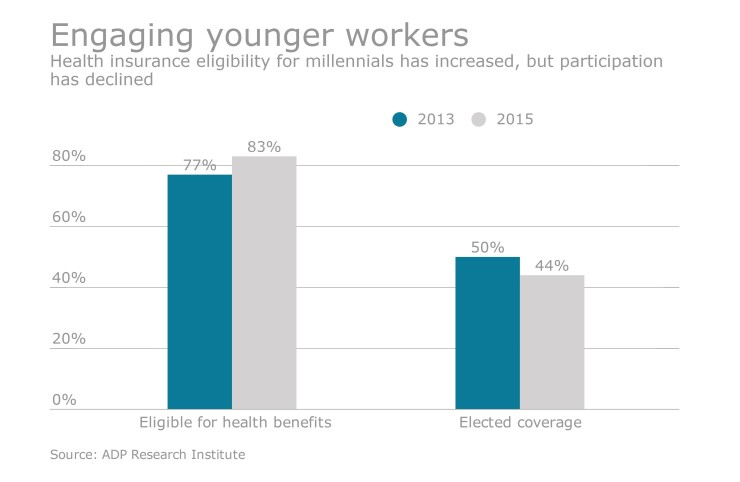HR leaders need to bone up on their business insights and foster a culture of engagement to achieve results, suggests a global survey of 189 CHROs by Korn Ferry.
As many as 34% of respondents admit to not using all available tools to align business and talent strategies — which was their No. 1 concern that keeps them awake at night — while 64% haven’t integrated strong HR data analytics into their business planning process.

Competitive pressure on the business also was the biggest factor cited (29%) for having the greatest impact on increasing the complexity of the HR role compared to more than five years ago, followed by gaps in the existing workforce or shortage of skilled external talent (20%).
The critical talent strategies CHROs lead “are core to executing on crucial business priorities,” according to Joseph McCabe, vice chairman in Korn Ferry’s Global Human Resources Center of Expertise. “Disruptors such as digitization and globalization are creating an environment of constant organizational change. HR leaders must understand the business challenges that occur as a result of these disruptions, including the impact on the business strategy, and be able to quickly adapt and act.”
Benefit brokers and advisers can help eliminate this HR blind spot by suggesting to their employer clients a benefits package that aligns with a company’s business strategy and culture, says David Shanklin, head of culture strategy at CultureIQ.
“You have to have the right data to correlate with your business metrics,” which can help identify specific opportunities to improve or strengthen employee behaviors, he says. “They can use the data to deliver on what matters most to employees and drives their success.”
Given the concerns top industry practitioners have voiced, perhaps it’s not surprising that 41% of survey respondents cited business acumen as the skill most lacking when seeking HR talent for their own teams, followed by an inability to turn strategy into action (28%).
They also acknowledge that this knowledge gap could land them in trouble. Not linking tangible business outcomes to HR efforts closely trailed an inability to work well with or lead others (34% vs. 37%) as the top reason given for why a CHRO would get fired behind. In addition, 36% of respondents cited an inability to directly connect HR efforts to tangible business outcomes as the top reason why a CHRO would voluntarily leave his or her employer.
Of all C-suite executives besides the CEO, the survey found that CHROs work most closely with the CFO and consider finances top of mind for boards of directors. Executive compensation was cited as the top board area of focus for HR.

Knowing where the biggest employment challenges are can help smart employers strategize benefits programs to retain the best employees.
The survey also ties business objectives to corporate culture. Asked which area is most crucial to meeting their organization’s long-term bottom-line goals, a majority of CHROs (59%) said building a culture of employee engagement, followed by leadership development (30%). “HR leaders need to create a culture of allowing people to take chances, to be agile and adaptable” to meet evolving challenges, says McCabe.
Only 1% of respondents think altering compensation and benefits is the best path to lasting success. Indeed, compensation and benefits alone do not create a high-performance culture, Shanklin cautions. McCabe says “compensation tends to be an inhibitor of performance if it is below the market rate,” and even if usual standards are met, “it has minimal impact on engagement.”
In order for a culture to drive success, he says it has to embody positive communication, support, collaboration and innovation practices, among other qualities. Many studies also indicate that employees are looking for a sense of purpose in their work and professional development opportunities, according to Shanklin.
He describes corporate culture as “the culmination of every employee’s behaviors. It’s how things get done within the organization, and it’s most importantly driven from leadership. However, HR can help foster a strong culture by understanding the specific behaviors that drive the business and collaborating with leaders to promote these behaviors.”
HR can understand their culture by collecting employee feedback to assess what matters to employees and drives their engagement, productivity and success, Shanklin says. “This provides you with a data set that you can then analyze and correlate to business metrics,” he adds.





